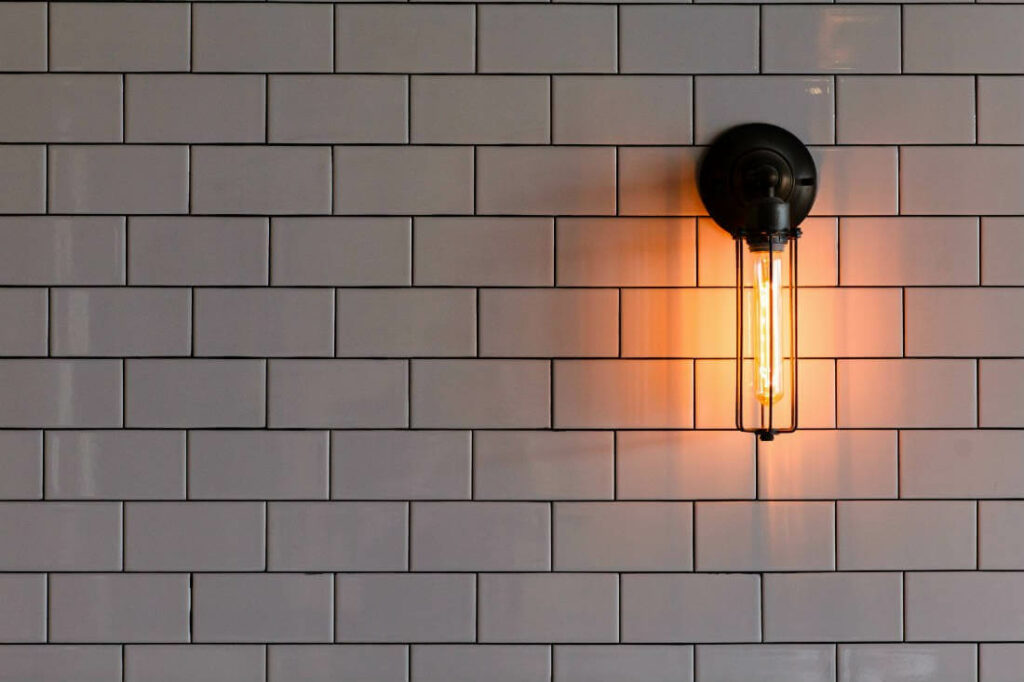While laying tile is not the most difficult do-it-yourself project, it is possible to make several typical mistakes. To avoid any setbacks during the installation of your subway tiles or another choice of subway tiles, here are some helpful tips and strategies to remember.
Trowel Size Mismatch
Ensure that the trowel you choose for the work matches the size of the chosen kitchen subway tiles. Larger tiles need a thick layer of thin-set, which necessitates the use of a trowel with deep notches. When shopping for a thin-set for larger tiles, check the label for phrases such as large tile, medium bed, or large format.
Tile Cracking

Subway tiles, depending on the material from which they are made (think porcelain), might surely crack. A large number of destroyed tiles may quickly become expensive and inefficient. There are a few preventative measures that may be taken to reduce the number of split tiles. When cutting tile, the finest hardware to use is a diamond wet saw. When using the wet saw, make a point of applying moderate, uniform pressure to ensure an accurate cut.
Inconsistent Underlayment
To ensure that subway backsplash tiles lay level, the tile underlayment must be applied precisely. Vinyl tile is an acceptable underlayment as long as it is not damaged. A stable foundation will also prevent the tile from shattering. When the underlayment is not fitted correctly or evenly, develop it by placing a 1/4- or 1/2-inch concrete board underneath the tile.
Unevenly Laying Tiles
When subway tiles are stretched out in a slanting pattern, precise installation methods are required. To begin, alter the corners of the subway kitchen tiles to create a single design line. At that point, the rest of the pyramid design should be assembled around that line. As you progress, use a straightedge to verify the lines. This will assist you in remaining on track and avoiding zig-zag constructions unless that is what you want.
Inappropriate Grout Application
Make an effort not to let the brilliance of your subway tiles be overshadowed by poor grout. Clean, well-conceded grout lines enhance the appearance of the tile and help preserve it for an extended period of time. However, bad grouting may detract from the appearance of your tile project and result in a loss of time and money. You can read more about the Inappropriate Grout Application by clicking here.
Improper Wall Preparation
Before tiling, clean any oil spots and fingerprints from the dividers. When the walls are not level, neither the adhesive nor the subway tiles will adhere to them. Prior to installing your marble subway tiles or other tiles, ensure that the surface is level and smooth.
Omitting the Supporter Board
If you are putting the tile in a high-liquid zone, such as a shower or a backsplash, you must include a water-resistant backer board. The board assists in keeping everything solid, which prevents water from soaking small breaks.
Disorganized Caulk Lines
Caulking is one of the last steps in a tile project. Not only does leaving unsightly caulk lines between your subway tiles appear terrible, but it may also result in cracks and tiles that slide off easily.
Absence of “Back Butter”
Back buttering is a must when dealing with larger subway tiles. Buttering the back of the tile ensures a secure adhesion between the tile and the surface. Likewise, ensure that the thin-set is well mixed and then leave aside for 10 minutes to ensure that all of the dry mixes have absorbed the water.
Ignoring the Clean-Up

Once the grout film has dried, gently wipe away any remaining dirt and grime with a cotton or microfiber towel before cleaning your subway tiles at the conclusion of the activity.
Despite the term’s enormous popularity (nearly 200 pieces in our archives mention it—we checked), it turns out there is still a lot to learn about subway tile. At the Tile and Bath co, we’ve long recognized subway tile as practical, classic, and adaptable to a variety of interior styles. However, what is a subway tile? And when did it originate? We must confess that we were uncertain. As a result, we dug.
Here are some facts you may not be aware of.
1. It is believed to have originated underneath Manhattan.
As you may have guessed, the first subway tiles appeared underground—in New York City’s subway system. When it opened in 1904, designers Christopher Grand La Farge and George C. Heins had a difficult task: create a surface that was easy to maintain while yet feeling familiar, comfortable, and welcoming to city people experiencing subterranean transportation for the first time. Their solution—tiles with slightly curved edges and a glossy finish—ensured that subway stations remained clean, polished, and bright.
2. The first subway tile may be seen at an abandoned subway station.
Sleuths and design enthusiasts interested in seeing the original subway tiles might arrange a visit to New York City’s first subway station, the now-abandoned City Hall stop. The New York Transit Museum provides tours—but New Yorkers have been known to sneak a peek while riding the 6 lines.
3. It developed as a result of a concern with cleanliness.
Subway tiles developed as a result of a Victorian-era obsession with cleanliness. They are stain-resistant, simple to clean and reflect light due to their glossy, glazed appearance. They immediately gained a reputation for being practical and hygienic and became the preferred wall covering in a variety of other applications, from bathrooms and kitchens to butcher shops. Today, these same characteristics make them an attractive option for contemporary kitchens, bathrooms, and other spaces.
4. What are the traditional dimensions? That is debatable.
What is a subway tile? It’s a little difficult to define—particularly if you associate subway tiles with a certain rectangular form. While the traditional subway tiles are three by six inches in size, the definition is evolving. Nowadays, subway tile refers to tiles that are twice as long as they are broad. You can read about Different styles and patterns of subway tiles by visiting http://businesstodayz.com/different-styles-and-patterns-of-subway-tiles/


